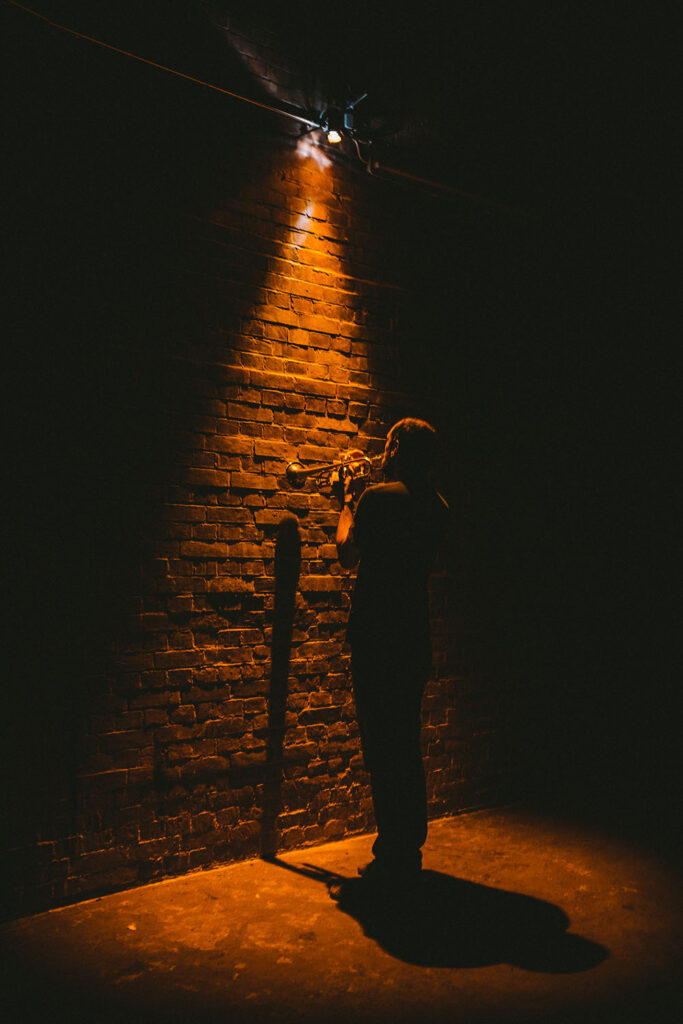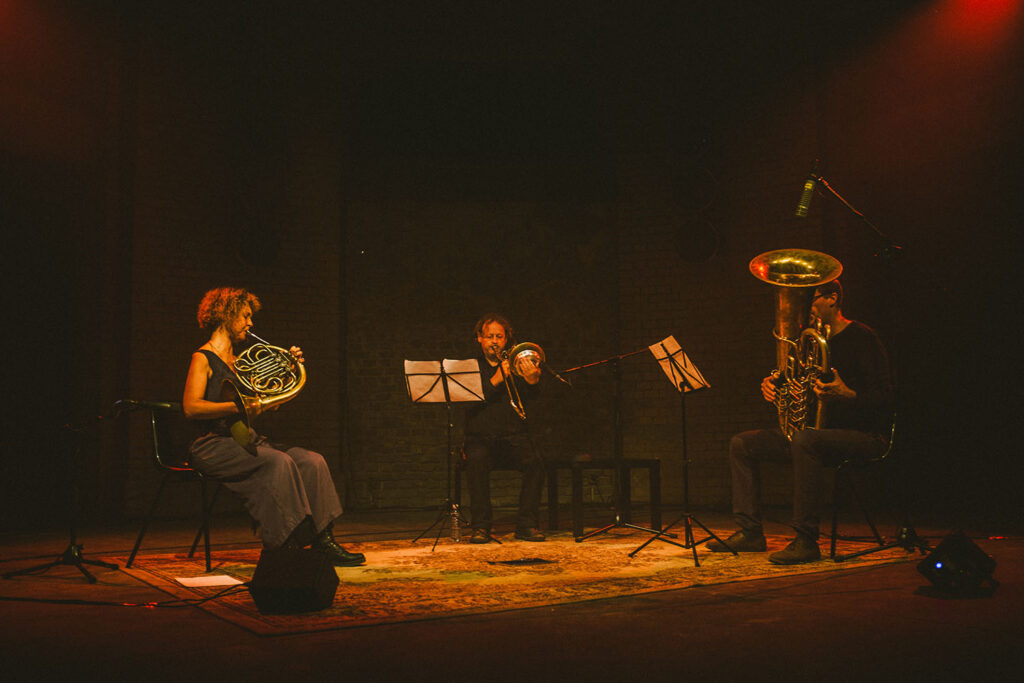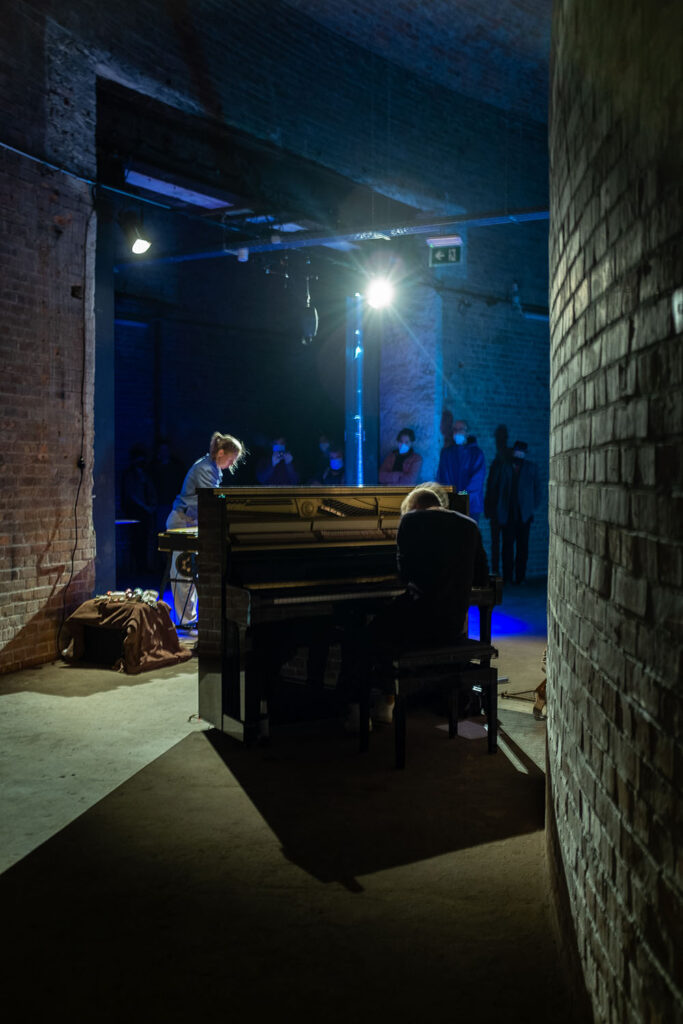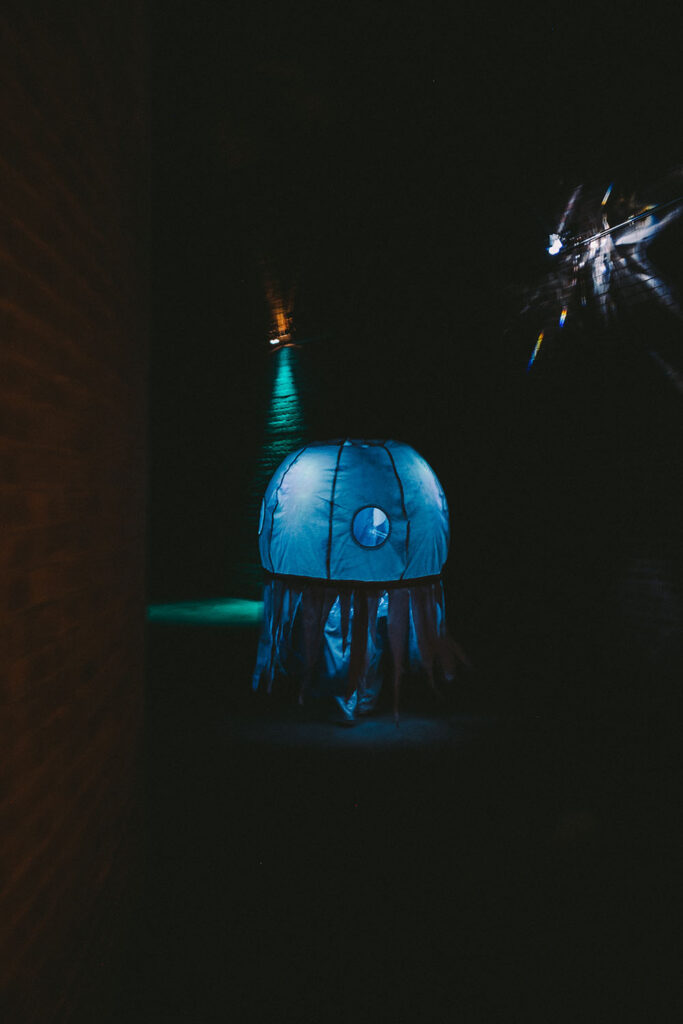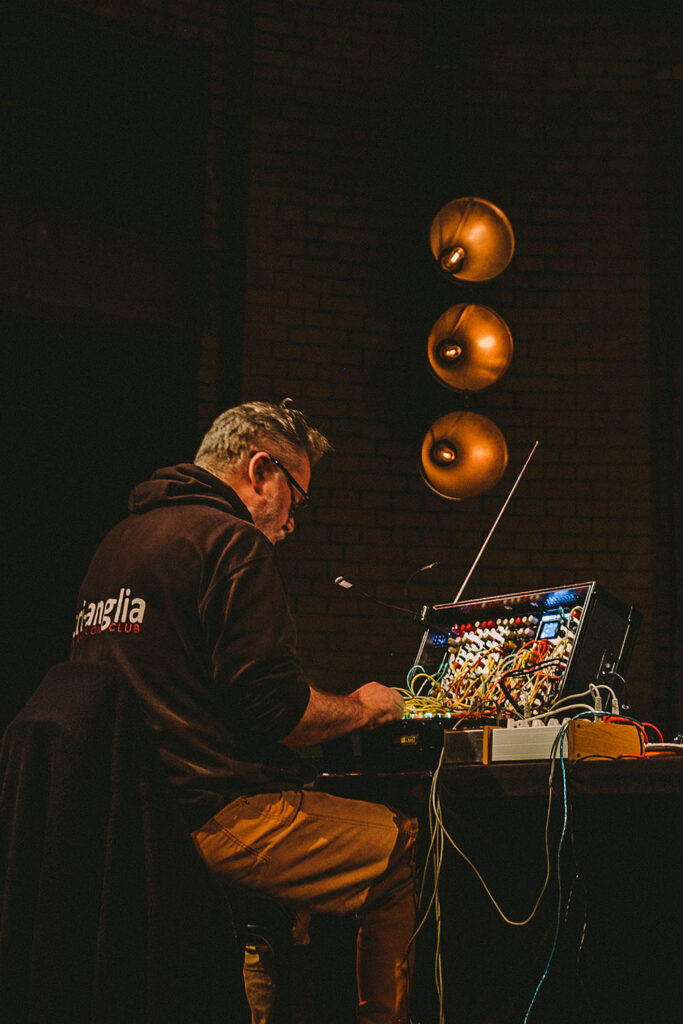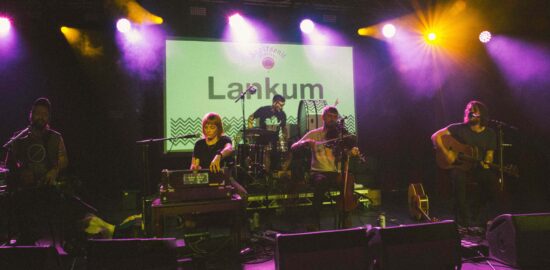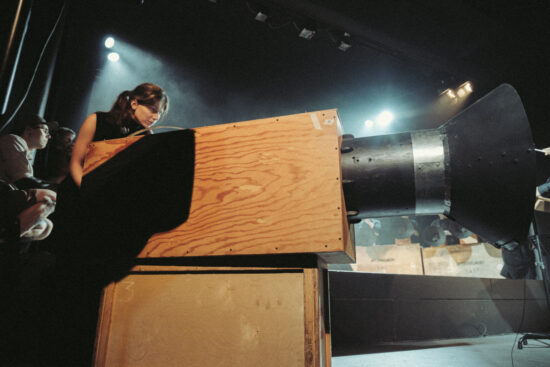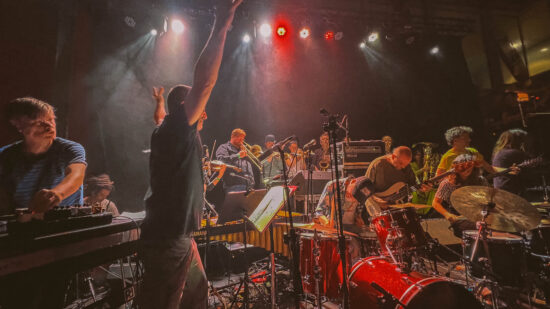The sound in a space with unusual acoustic properties and the way its perception changes – these are the two things I will remember most from Speicher V, which took place in Berlin’s water reservoir.
Translation: Aleksandra Szkudłapska
I find myself in the larger of the two spaces of the Berlin-Pankow reservoir, thinking. Where is the sound coming from? Do I look for the source? Follow the musicians? Or should I let myself be carried away by the resonance that fills the place? The performers are Mazen Kerbaj and Ute Wassermann – we could see them for a moment at the very beginning of the show. The former is armed with a trumpet, the latter with her unusual voice, which she uses to make incredible sounds: screams, chirps, wheezes and wails. The figures disappear, only to emerge unexpectedly from the darkness next to the illuminated walls. The sound, however, resonates continuously and loudly through the brick corridors.
Their acoustics conduct the grainy drones well – they flow right in front of the listeners. Kerbaj delivers drawn-out phrases on the trumpet, which he interrupts to hit the wall with stones. Wassermann wheezes and screams spasmodically. The sound resonates against the silence. The lighting is sparing, I am basically staring blankly into nothingness. Loads of questions: what is the source of the music? What do the musicians encounter along the way and use? When does Kerbaj attach a microphone with a small amp to his trumpet? I can only guess. Speicher reminds us that we do not have to see the sound to immerse ourselves in it. This may seem obvious, but normally it’s just nice to see the musicians. Here, though, the sound performance flows in from all sides, playing with the listeners and the eight-second resonance of the space. Wassermann and Kerbaj traverse one ring after another, but the acoustics are so powerful that the sound spreads loudly at all times. It is aided by the silence, and I am irritated by even the smallest pebble crunching under someone’s shoe sole. The voice bounces off the walls, the sound of the trumpet is carried into the distance or muffled by the bricks. A tour de force of the acoustic capacity of the place.
Moments later, in the smaller, southern reservoir, the musicians are this time visible in the warm lighting. The tank’s design is different. The large one is composed of three rings joined with a main and side passage. In the smaller one, the stage is in the centre, with people sitting around it in an oval space full of brick arches. This is where Zinc & Copper premiere “Pons” by the American composer and guitarist Duane Pitre in front of a live audience. Pitre is known for his lengthy pieces based on uniform, microtonal drones, which may be played solo with guitar and field recordings (his brilliant album Bayou Electric comes highly recommended), or arranged for small string ensembles. Pons stands for the structure of the brainstem responsible for regulating breathing, listening and deep sleep. Here, in the darkness, the piece performed by Elena Kakaliagou (French horn), Hilary Jeffrey (trombone) and Robin Hayward (microtonal tuba) gradually fills the space. The sound – from single, fragmented parts played by individual instruments – begins to merge into a dense magma. Its minimalism resonates, accumulating among the eight-metre high room. The acoustic instruments blend into a massive drone that sounds like someone playing a synthesiser. The monumental waves generated by the brass instruments are powerful and strong, creating a boundless sonic experience, a musical epic that could go on forever.
For me, these two Berlin concerts are the most memorable. This is my first time at Speicher, for two out of three days. It’s a festival that changes the perception of sound, its properties and the way it is received. In the darkness of reverberating halls, one listens to the music with undivided attention – after a year of intermittent lockdowns, this underground temple does not allow for conversations or comments. The audience, frozen to their spots, listen patiently from beginning to end – regardless of whether they are standing in the larger tank, or sitting in the smaller one, whether the music is oriented towards interaction and the artists stage a performance of sorts aimed at the listeners, or whether we are just focused on listening and watching closely.
The final day of the festival begins in a performative way, with Els Vandeweyer and Reiko Okuda as Metal Illusion. At first, the duo circulate around the large tank in fairy-tale jellyfish costumes, scuffing metal objects on the floor. The impression of being underwater is enhanced by blue lights. A sewn-up figure of a seashell princess and plastic yoghurt pots have us – unobtrusively and very subtly – alternating between myths and ecology. Underwater ocean stories are a perfect starting point – anything found in the water can be used as a source of music. But there are also further elements: a metal figure made of nails counterpoints Rieko Okuda’s jerking piano sounds. The artist holds it like a character from a puppet theatre suspended on strings: as it produces sounds, it seems to “talk” to the vibraphone (played with strokes of the bow, mallets, or “electrified” using plastic pots). There is also the shell princess dancing on the tiles, attached to the mallets. Forgive me if this sounds infantile, but this paratheatrical concert is simply like that. A bit puppet-like, very diverse. The short, performative show follows its own dramatic curve: from sounds resonating around the tank, through minimalist, nervous accumulation, to delicate, soothing melodies at the end.
There are two more interactions between duos. Sicker Man and Kiki Bohemia engage in a drone duel using the sound of electric guitars, cellos and all sorts of small percussion instruments. Their music is like a growing wave. This is the only concert in the large tank that is so static. It starts with Karla Wenzel’s fine sounds on the hi-hat, effects and small percussion instruments. Then, the music thickens, resonates and hits you with strokes on the strings. Wenzel is accompanied by Tobias Vethake, first on electric bass, then on electric guitar. They play without a sound system, with only a small amplifier set up a few metres away, which carries the sound along the rings of the tank. The climax is Wenzel’s loud, piercing singing. A good moment to end the concert after 30 minutes, when it reached its apogee.
Against this background, Audrey Chen and Richard Scott are rather disappointing. The former is wailing, croaking, her humming becomes disjointed. Scott counterpoints her voice in a punctuated manner, splashing around on a modular synthesizer, but seems uninspired. This time around, it seems as if the opera singer is misunderstood by her musical partner, chaos reigns, the concert conceptually peters out.
Earlier in the day, the same venue was used by the percussionist Berke Can Özcan, who presented material from his last year’s record Mountains are Mountains. The beautiful album, based on samples, electronic loops and percussion, reaches the listener in two layers. The base is made up of electronics, which (surprise, surprise) resonate, creating a background sound from the speakers. The Turkish drummer builds on it by playing drums, pots and metal gas cylinders. I catch particular tracks from the album – like “The Sheperd” and “Igloo” – which have the potential for slightly alternative versions. Percussion instruments resound, and the bass drum rumbles through the reservoir. An intriguing finale: while electronics subtly ring out in the background, the musician escalates the percussion sound, especially on gongs and kettledrums. At the end, the sound is beautifully dispersed around the room.
Speicher is an unusual event, which draws attention to several issues: first, the listening itself, second, how we go about it, and third, how this process changes our perception of sound. Clichés, right? But when you’re in a huge water reservoir or later recount where you were at a concert, the context changes everything. In the post-pandemic reality, this type of attentive perception is much more appealing to me. Devoid of the distractions of clubs or festivals and aimed at an audience willing to listen to sound art in silence, darkness and concentration. This may seem self-evident, but perhaps that’s why the Berlin festival still lingers in the mind a week or even a month later – because it reminds us of these things in a simple and subtle, yet in its own way spectacular and theatrical way.



